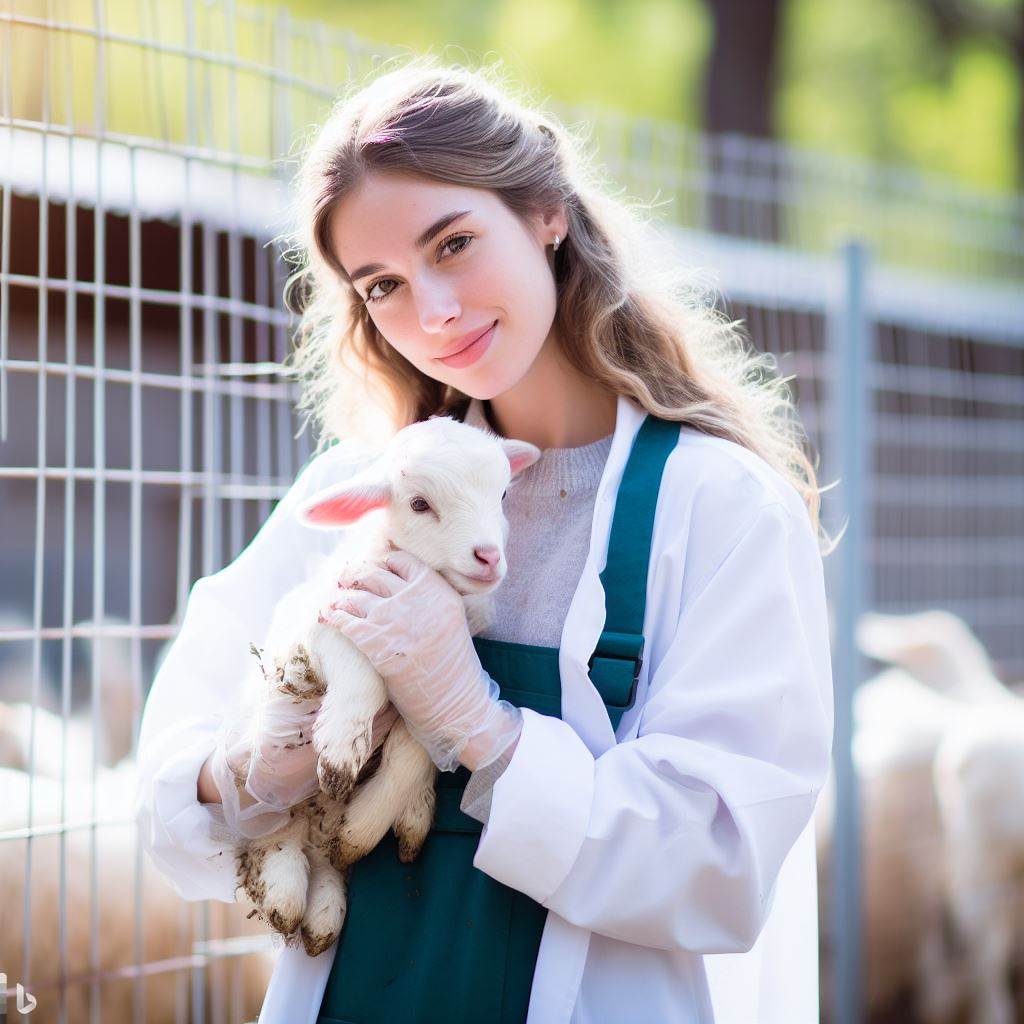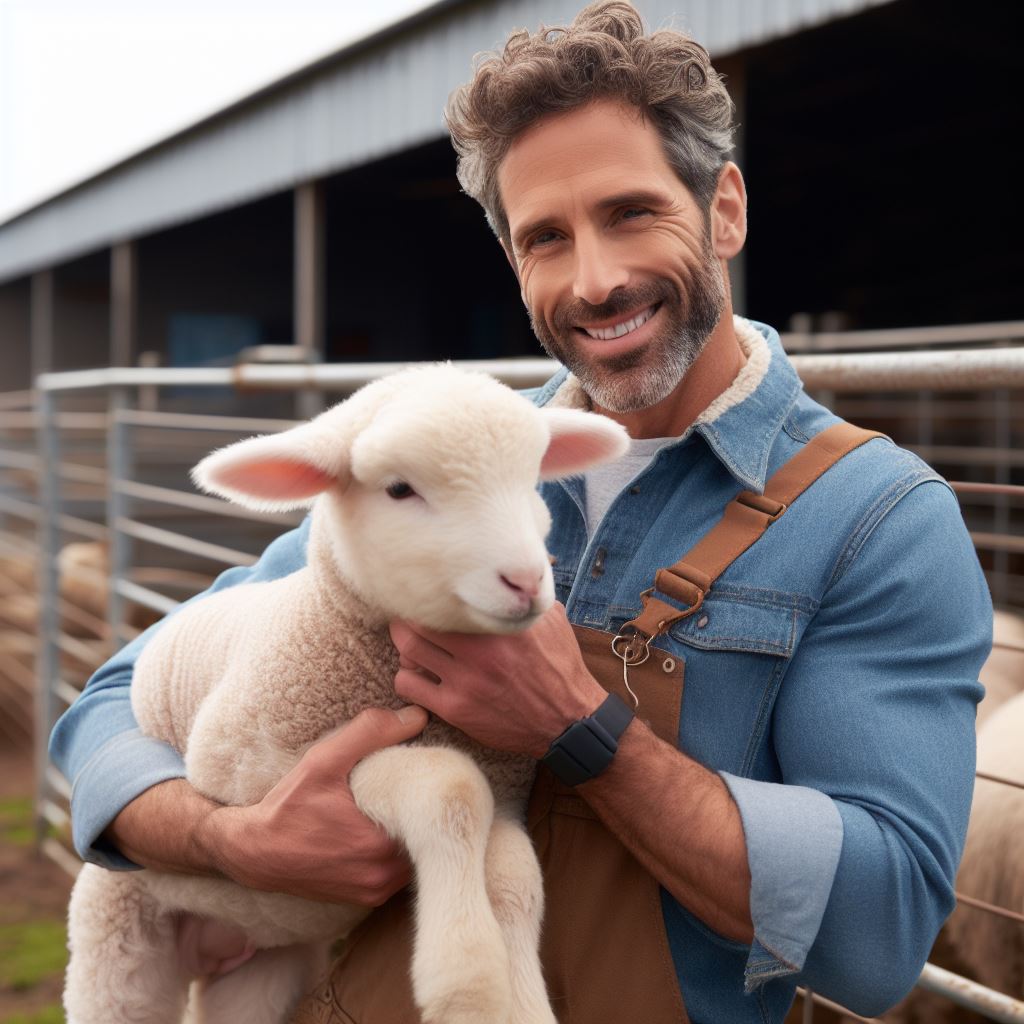Introduction
Definition of animal welfare and breeding goals
Animal welfare refers to the ethical treatment and well-being of animals while breeding goals focus on desired traits.
Animal welfare encompasses the ethical treatment and well-being of animals, ensuring their physical and mental needs are met.
Breeding goals, on the other hand, aim to achieve desired traits in animals through selective breeding.
Importance of balancing both in the US
Balancing both animal welfare and breeding goals is crucial to ensure sustainable and responsible practices in the US.
In the United States, it is vital to strike a balance between these two factors. While breeding goals may prioritize specific traits for commercial or agricultural purposes, animal welfare must not be compromised.
Balancing animal welfare and breeding goals is significant for several reasons. First, it ensures the humane treatment of animals, preventing unnecessary suffering and cruelty.
Additionally, it helps maintain genetic diversity and reduce the risk of inbreeding and associated health issues.
Achieving this balance is a multifaceted challenge. It requires responsible breeding practices, such as genetic testing and selecting suitable breeding pairs.
Furthermore, regulations and guidelines must be in place to uphold animal welfare standards and prevent exploitation.
Overview of the blog post
This blog post will provide a comprehensive overview of the importance of balancing animal welfare and breeding goals in the US.
Throughout this blog post, we will delve into the various aspects of balancing animal welfare and breeding goals.
We will explore the potential conflicts that arise and discuss strategies to mitigate them. By promoting a holistic approach, we can achieve sustainable and ethical practices in the breeding industry.
In general, achieving a balance between animal welfare and breeding goals is crucial in the US.
It ensures the well-being of animals while still allowing for selective breeding to meet various needs. Let us now embark on this important discussion.
The Significance of Animal Welfare
Explanation of animal welfare
Animal welfare refers to the well-being and quality of life of animals, including their physical and mental health.
Legal requirements and regulations surrounding animal welfare in the US
In the United States, animal welfare is protected by various laws and regulations at federal, state, and local levels.
Ethical considerations and public perceptions
Animal welfare is not only a legal requirement but also an ethical concern for many individuals and organizations.
Public perceptions regarding animal welfare significantly influence consumer choices and attitudes towards breeders.
Impact of animal welfare on the reputation of breeders and the industry as a whole
Adherence to high animal welfare standards enhances the reputation of breeders and the industry.
Breeders committed to animal welfare are seen as responsible and trustworthy, attracting more customers.
Transform Your Career Today
Unlock a personalized career strategy that drives real results. Get tailored advice and a roadmap designed just for you.
Start NowOn the contrary, neglecting animal welfare can lead to negative publicity, boycotts, and legal consequences.
The Importance of Breeding Goals
Definition of breeding goals
Breeding goals refer to specific objectives that breeders aim to achieve through selective mating.
The purpose and benefits of breeding goals
- Breeding goals enable breeders to improve specific traits in animals and meet specific market demands.
- They help in the production of healthier and more productive animals.
- Breeding goals also contribute to the overall welfare and sustainability of animal populations.
How breeding goals contribute to the development and preservation of desirable traits
- By setting breeding goals, breeders can select individuals with desired traits for reproduction.
- This process promotes the development and preservation of desirable traits in the population.
- It helps in maintaining the genetic diversity necessary for the long-term survival of the breed.
Role of breed standards in setting breeding goals
- Breed standards serve as guidelines for breeders to determine the ideal characteristics of a specific breed.
- These standards help breeders align their breeding goals with the breed’s recognized traits and purpose.
- They ensure the consistency and uniformity of the breed, preserving its unique characteristics.
In short, breeding goals play a crucial role in the animal breeding industry. They provide breeders with a clear direction and purpose, enabling them to improve specific traits in animals while considering animal welfare.
By setting breeding goals in line with breed standards, breeders can contribute to the development and preservation of desirable traits within a breed.
Ultimately, this benefits both the breeders and the animals themselves, as it leads to healthier, more productive, and genetically diverse populations.
Read: US Breeding Regulations: What New Breeders Must Know
Challenges in Striking a Balance
Conflicting interests between animal welfare and breeding goals
- The breeding industry often focuses on genetic traits for profit, while animal welfare advocates prioritize animal well-being.
- Efforts to breed animals for specific traits might neglect the overall welfare of the animals.
- Conflicts arise when breeding goals prioritize certain traits at the expense of animal welfare.
- Animal welfare concerns might clash with breeding goals that aim to maximize productivity and profitability.
Negative consequences of prioritizing one over the other
- Excessive focus on breeding goals can result in health problems and genetic disorders.
- Pushing animals beyond their natural limits for breeding purposes can cause physical and emotional stress.
- Ignoring animal welfare in favor of breeding goals can lead to poor living conditions and compromised welfare.
- Long-term neglect of animal welfare can erode public trust and tarnish the reputation of the breeding industry.
Consumer demands and changing breed preferences
- Consumer preferences for specific breeds can change over time, impacting breeding goals.
- Breeders must balance producing popular breeds with maintaining animal welfare standards.
- Shifts in consumer demands may lead to the overbreeding of certain breeds, potentially harming the animals involved.
- Breeders must stay aware of evolving trends to align breeding goals with consumer expectations while still ensuring animal welfare.
Balancing profitability with ethical practices
- Breeding for profit can sometimes come at the expense of animal welfare.
- Striking a balance involves ensuring profitability while not compromising the well-being of the animals.
- Implementing ethical practices can increase costs, reducing profit margins for breeders.
- However, maintaining ethical standards is crucial to safeguarding animal welfare and the reputation of the industry.
In fact, balancing animal welfare and breeding goals in the US is a complex challenge.
Conflicting interests, negative consequences, evolving consumer demands, and profitability concerns all contribute to this complexity.
Addressing these challenges requires breeders to prioritize animal welfare alongside breeding goals, considering the long-term well-being of the animals involved.
Adapting breeding practices to meet changing consumer demands while maintaining ethical standards is also vital.
Ultimately, achieving a harmonious balance between animal welfare and breeding goals is essential for the sustainability and ethical reputation of the breeding industry in the US.
Read: Financial Prospects of Animal Breeding in the USA

Strategies for Balancing Animal Welfare and Breeding Goals
Achieving a balance between animal welfare and breeding goals requires the implementation of effective strategies that address the concerns of both breeders and animal welfare organizations.
By collaborating with veterinary professionals and incorporating animal welfare considerations into breeding programs, responsible breeding practices can be promoted.
Additionally, education and awareness campaigns play a crucial role in ensuring that breeders and the general public understand the importance of responsible breeding and animal welfare.
Moreover, encouraging research and innovation can lead to sustainable solutions that benefit both the breeding industry and animal welfare.
Collaboration between breeders, veterinary professionals, and animal welfare organizations
One key strategy for balancing animal welfare and breeding goals is to foster collaborations among breeders, veterinary professionals, and animal welfare organizations.
By working together, these stakeholders can share knowledge and expertise to ensure that breeding practices prioritize animal welfare.
Veterinary professionals can provide valuable insights into the physical and behavioral needs of animals, while animal welfare organizations can advocate for stricter standards and guidelines.
Showcase Your Business Today
Reach thousands of readers actively exploring professional services. Publish your business profile and grow your audience now.
Publish NowSuch collaborations can result in the development of breeding programs that protect animal welfare while still achieving desired breeding goals.
The role of education and awareness in promoting responsible breeding practices
Educating and raising awareness about responsible breeding practices is another important strategy for achieving a balance between animal welfare and breeding goals.
Breeders need to understand the importance of selecting for genetic traits that enhance animal welfare, rather than solely focusing on external appearances.
By educating breeders about the potential harm caused by excessive inbreeding or breeding for exaggerated physical features, they can make more informed decisions that prioritize the overall health and well-being of the animals.
Additionally, promoting responsible breeding practices to the general public helps ensure that they support reputable breeders who prioritize animal welfare over profit.
Incorporating animal welfare considerations into breeding programs
Incorporating animal welfare considerations directly into breeding programs is essential for achieving a balance between breeding goals and animal welfare.
Breeders can prioritize genetic diversity and select against hereditary diseases or physical traits that impair the animal’s quality of life.
Additionally, ethical breeding practices also consider the social and behavioral needs of animals, avoiding excessive confinement and promoting proper socialization.
By making animal welfare an inherent part of breeding goals, it ensures that breeders produce healthier and happier animals while still achieving desired traits.
Encouraging research and innovation to find sustainable solutions
Encouraging research and innovation plays a crucial role in finding sustainable solutions that balance animal welfare and breeding goals.
Investment in research can help identify genetic markers for hereditary diseases, leading to more informed breeding decisions.
It can also help develop alternative breeding methods, such as in vitro fertilization or embryo transfer, which can minimize breeding-related risks and improve animal welfare.
By supporting and promoting research in these areas, breeders can adopt sustainable practices that enhance animal welfare while still achieving their breeding goals.
In essence, achieving a balance between animal welfare and breeding goals requires the implementation of various strategies.
Collaboration between breeders, veterinary professionals, and animal welfare organizations helps create breeding programs that prioritize animal welfare.
Education and awareness play a crucial role in promoting responsible breeding practices among breeders and the general public.
Incorporating animal welfare considerations directly into breeding programs ensures the well-being of the animals.
Encouraging research and innovation drives sustainable solutions that benefit both the breeding industry and animal welfare.
By implementing these strategies, it is possible to strike a balance between animal welfare and breeding goals in the United States.
Read: Ethical Practices for Animal Breeders: US Standards
Find Out More: Agricultural Engineer Salary Ranges: US National Overview
Success Stories and Best Practices
Examples of breeders successfully balancing animal welfare and breeding goals
- A dog breeder implemented a health screening program to ensure their puppies are free from genetic diseases.
- A dairy farmer focused on improving cow comfort by providing comfortable bedding and spacious resting areas.
- A horse breeder collaborated with equine nutritionists to develop a balanced diet plan for optimal growth and health.
- A poultry farmer introduced natural lighting in the barns to promote a more natural circadian rhythm for the birds.
- A cat breeder prioritized socialization by regularly handling and exposing kittens to new experiences and environments.
Case studies highlighting innovative approaches and their outcomes
- A pig breeder implemented group housing for sows, resulting in improved social interaction and reduced stress levels.
- A rabbit breeder utilized selective breeding to develop a breed with traits that require fewer grooming needs.
- A cattle rancher implemented rotational grazing to promote pasture health and reduce the need for supplemental feeding.
- A bird breeder implemented genetic diversity management strategies to prevent inbreeding and maintain healthy populations.
- A fish breeder developed a recirculating water system to reduce waste and improve water quality for the fish.
Promoting these success stories to inspire others in the industry
Sharing success stories and best practices is crucial in promoting the well-being of animals while maintaining breeding goals.
By showcasing the accomplishments of breeders who prioritize animal welfare, others in the industry can be inspired to adopt similar practices.
These stories can be featured in industry publications, online platforms, and conferences.
Furthermore, creating networking opportunities for breeders to connect with successful examples can facilitate knowledge transfer and encourage the adoption of innovative approaches.
Breeder associations and organizations can play a significant role in organizing events where successful breeders can share their experiences and offer guidance to others who are striving to balance animal welfare and breeding goals.
It is essential to acknowledge and celebrate these successes, as they provide tangible evidence that animal welfare and breeding goals are not mutually exclusive.
By emphasizing the positive outcomes achieved through ethical breeding practices, the industry can work collaboratively to improve animal welfare standards.
Continual education and awareness campaigns can also contribute to the promotion of these success stories.
By highlighting the benefits and positive impacts that result from balancing animal welfare and breeding goals, breeders can be encouraged to adopt similar approaches.
This can include educational workshops, webinars, and online resources that provide practical guidance and showcase successful examples.
Ultimately, promoting success stories is a powerful tool to inspire positive change in the industry and serve as a reminder that animal welfare should always remain a priority alongside breeding goals.
Read: Day in the Life: Following a US Animal Breeder
Conclusion
Recap
It is crucial to strike a balance between animal welfare and breeding goals in the US. Breeding practices should prioritize the well-being of animals, ensuring their physical and mental health.
Final thoughts
Continuous efforts are needed to achieve the ideal balance. Breeders should regularly assess their breeding practices, incorporating advancements in animal welfare science.
Encouragement to participate
Readers are encouraged to engage in the discussion surrounding animal welfare and breeding goals. Sharing experiences and insights can contribute to the refinement of breeding practices.
All in all, it is evident that the harmonious coexistence of animal welfare and breeding goals is paramount in the US.
While breeding for desired traits is essential, it should never come at the expense of animal well-being.
Striving for a balance requires commitment, adaptability, and a willingness to embrace scientific knowledge and ethical considerations.
As responsible breeders, it is our duty to prioritize the health and happiness of the animals under our care.
Showcase Your Business Today
Reach thousands of readers actively exploring professional services. Publish your business profile and grow your audience now.
Publish NowBy continuously evaluating and improving our breeding practices, we can ensure that future generations of animals thrive physically, mentally, and emotionally.
We invite readers to join in the ongoing conversation, sharing their experiences, insights, and suggestions.
Together, we can create a future where animal welfare is at the forefront of breeding goals, maintaining a harmonious relationship between humans and animals.
[E-Books for Sale]
The Big Book of 500 High-Paying Jobs in America: Unlock Your Earning Potential
$19.99 • 500 High-Paying Jobs • 330 pages
Explore 500 high-paying jobs in America and learn how to boost your career, earn more, and achieve success!
See All 500 High-Paying Jobs of this E-Book
1001 Professions Without a Degree: High-Paying American Jobs You Can Start Now
$19.99 • 1001 Professions Without a Degree • 174 pages
Discover 1001 high-paying jobs without a degree! Unlock career tips, skills, and success strategies for just $19.99!




